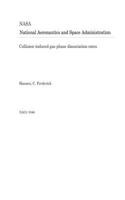
Collision-Induced Gas Phase Dissociation Rates
Series:
The Landau-Zener theory of reactive cross sections was applied to diatomic molecules dissociating from a ladder of vibrational states. The result predicts a dissociation rate that is quite well duplicated by an Arrhenius function having a preexponential temperature dependence of about T(sub -1/2), at least for inert collision partners. This relation fits experimental data reasonably well. The theo
NaN
VOLUME
English
Paperback

The Landau-Zener theory of reactive cross sections was applied to diatomic molecules dissociating from a ladder of vibrational states. The result predicts a dissociation rate that is quite well duplicated by an Arrhenius function having a preexponential temperature dependence of about T(sub -1/2), at least for inert collision partners. This relation fits experimental data reasonably well. The theory is then used to calculate the effect of vibrational nonequilibrium on dissociation rate. For Morse oscillators, the results are about the same as given by Hammerling, Kivel, and Teare in their analytic approximation for harmonic oscillators, though at very high temperature a correction for the partition function limit is included. The empirical correction for vibration nonequilibrium proposed by Park, which is a convenient algorithm for CFD calculations, is modified to prevent a drastic underestimation of dissociation rates that occurs with this method when vibrational temperature is much smaller than the kinetic temperature of the gas. Hansen, C. Frederick Unspecified Center NAG1-1046...
Price Comparison [India]
In This Series
Bestseller Manga
Trending NEWS




















